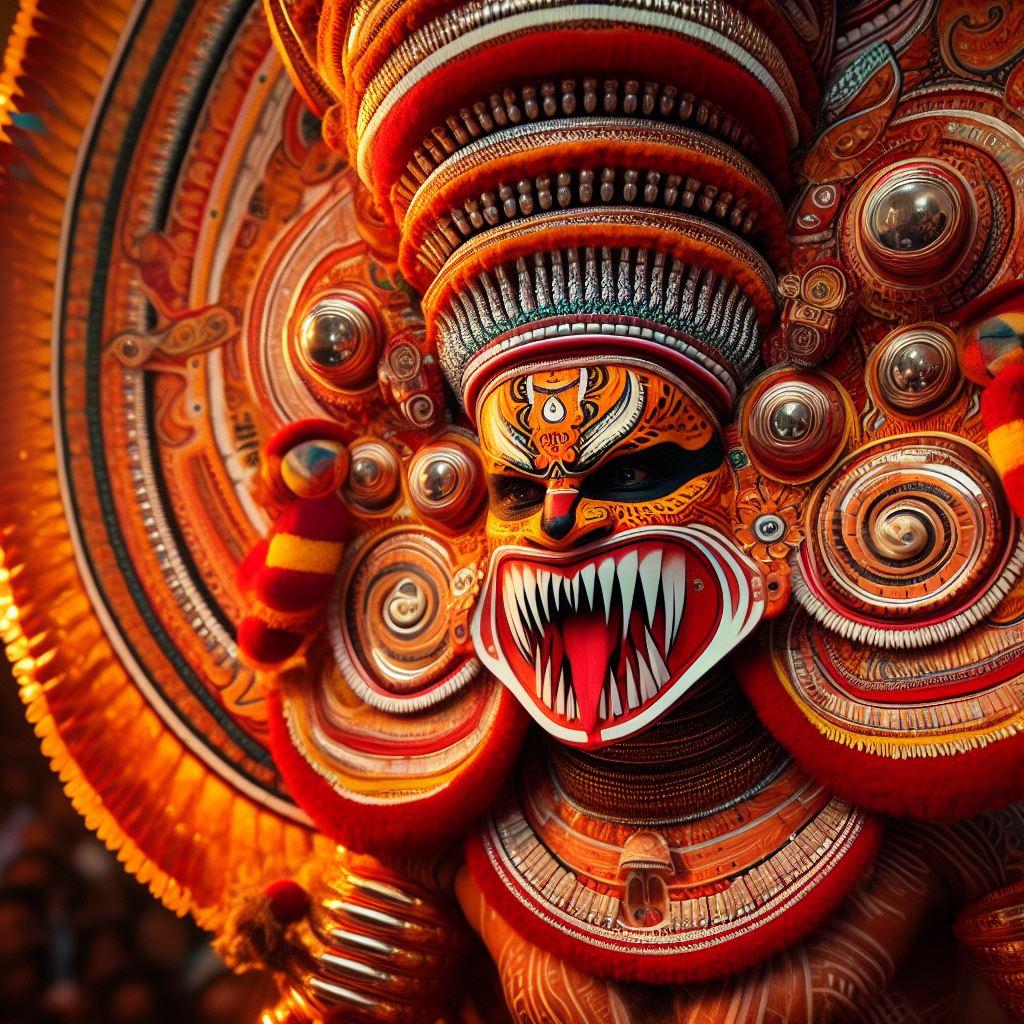Introduction:
Welcome to the first installment of our series on Indian art forms, where we delve deep into the diverse and vibrant cultural heritage of India. In this blog post, we will journey to the northern region of Kerala to unravel the mystical world of Theyyam, an ancient ritualistic dance form that is steeped in tradition and spirituality.
Theyyam: A glimpse into tradition and mythology
Theyyam, also known as Kaliyattam, is a sacred dance ritual performed in the Malabar region of North Kerala. It is a unique blend of dance, music, and religious fervor, with roots dating back several centuries. The word “Theyyam” is derived from the Malayalam language, meaning “God” or “Deity.”
Origins and evolution:
The origins of Theyyam can be traced back to the indigenous communities of Kerala, particularly the Malabar region. It is believed to have evolved from ancient tribal rituals and animistic worship practices. Over time, it has assimilated elements of Hindu mythology and folklore, becoming an integral part of the region’s cultural identity.
Theyyam performers: The divine embodiments
Central to the Theyyam tradition are the performers, known as Theyyam artists or ‘Theeyattam’ in local parlance. These artists, usually belonging to specific caste communities, undergo rigorous training and preparation to portray various divine and mythological characters during the ritual.
Each Theyyam performance is a mesmerizing spectacle, with the artist adorned in elaborate costumes, intricate makeup, and vibrant headgear that symbolize the deity they represent. Through intricate dance movements and rhythmic chants, they invoke the presence of the deity, transcending the boundaries between the earthly and the divine.
Themes and symbolism:
The themes depicted in Theyyam performances are diverse, ranging from tales of gods and goddesses to ancient folklore and local legends. Each Theyyam character embodies specific attributes and qualities, serving as a symbol of power, protection, or prosperity for the community.
Moreover, Theyyam is not merely a form of entertainment but also serves as a medium for social and spiritual transformation. It fosters a sense of communal harmony and collective identity, reinforcing the cultural bonds that bind the community together.
Rituals and ceremonies:
The performance of Theyyam is accompanied by elaborate rituals and ceremonies that imbue the ritual with sanctity and solemnity. Prior to the performance, the artist undergoes a period of purification and fasting to spiritually prepare themselves for the divine possession.
The rituals typically take place in the precincts of sacred groves, village temples, or ancestral homes, with the entire community participating in the festivities. It is believed that during the Theyyam performance, the deity descends upon the artist, blessing the devotees and offering guidance and protection.
Preservation and revival Efforts:
Despite its rich cultural significance, Theyyam faces numerous challenges in the modern era, including dwindling patronage, economic pressures, and cultural commodification. However, concerted efforts are underway to preserve and promote this ancient art form, both at the grassroots level and through government initiatives.
Conclusion:
In conclusion, Theyyam stands as a testament to the rich cultural heritage and artistic prowess of the Malabar region of Kerala. As we celebrate the diversity of Indian art forms, let us cherish and preserve the legacy of Theyyam for future generations, ensuring that this timeless tradition continues to thrive and inspire awe for years to come.

